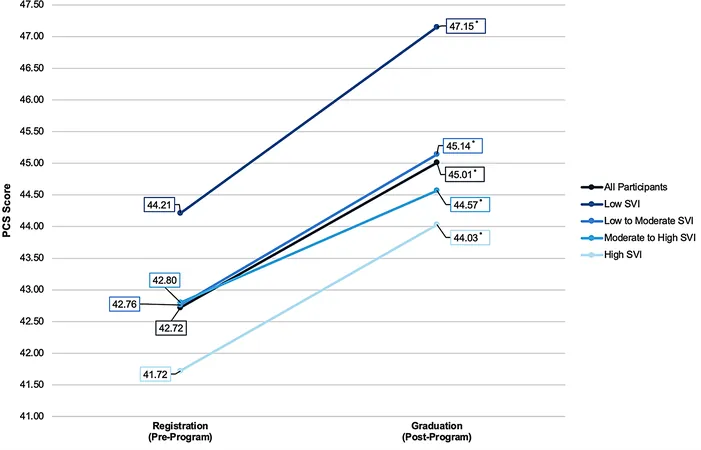
Shocking Discoveries Show Mammals Were Transitioning to Ground Life Just Before the Dinosaurs' Downfall!
2025-04-02
Author: Daniel
Introduction
In a groundbreaking study conducted by researchers from the University of Bristol, new evidence reveals that mammals were already adapting to life on the ground millions of years before the catastrophic asteroid event that wiped out the dinosaurs. This research, published in the esteemed journal Palaeontology, sheds light on prehistoric adaptations and the relationship between mammals and their changing environments.
Research Focus
The study focused on examining fossilized bone fragments, specifically the ends of limb bones from marsupial and placental mammals discovered in Western North America. This region is unique in having a well-preserved fossil record from this critical period. By meticulously analyzing these small fossils, the team uncovered significant signs that these mammals were evolving toward a more terrestrial lifestyle in response to environmental changes.
Significance of Findings
Lead researcher Professor Christine Janis from the University of Bristol’s School of Earth Sciences emphasized the existing knowledge about the transformation of plant life during the late Cretaceous. The rise of flowering plants, or angiosperms, played a pivotal role in diversifying habitats on land. Interestingly, it was observed that tree-dwelling mammals faced considerable challenges following the asteroid impact, but whether mammals were actively becoming more terrestrial as their habitats evolved had not been clearly documented until now.
Methodology
Unlike previous research that primarily analyzed complete skeletons to understand ancient mammalian movement, this study stands out by employing small bone elements to track changes across an entire community rather than focusing on individual species. Researchers used statistical data from museum collections across New York, California, and Calgary to analyze these tiny yet crucial fossils.
Professor Janis' Insights
Professor Janis explained, “We have long understood that the surfaces of mammalian long bones can convey significant information about their locomotion. However, this is the first study that successfully utilizes such minute bone fragments to observe evolutionary changes at the community level.”
Focus on Therian Mammals
This comprehensive analysis centered on bone articular fragments from therian mammals, encompassing both marsupials and placentals. The study intentionally avoided examining more primitive mammals, such as multituberculates, due to the differences in their bone structures.
Broader Implications
The implications of this research are profound, providing new insights into the ways prehistoric mammals adapted to their ever-evolving environments—just a few million years before the asteroid impact that would dramatically reshape life on Earth. As we continue to uncover the secrets of our planet's past, studies like this prompt us to reconsider the dynamics of survival and adaptation in the face of environmental challenges.
Conclusion
In a world where climate change and habitat destruction are pressing concerns, this research reminds us of the resilience and adaptability of life—both in the past and the present. What other secrets will paleontology unveil about the history of life on Earth? Stay tuned!





 Brasil (PT)
Brasil (PT)
 Canada (EN)
Canada (EN)
 Chile (ES)
Chile (ES)
 Česko (CS)
Česko (CS)
 대한민국 (KO)
대한민국 (KO)
 España (ES)
España (ES)
 France (FR)
France (FR)
 Hong Kong (EN)
Hong Kong (EN)
 Italia (IT)
Italia (IT)
 日本 (JA)
日本 (JA)
 Magyarország (HU)
Magyarország (HU)
 Norge (NO)
Norge (NO)
 Polska (PL)
Polska (PL)
 Schweiz (DE)
Schweiz (DE)
 Singapore (EN)
Singapore (EN)
 Sverige (SV)
Sverige (SV)
 Suomi (FI)
Suomi (FI)
 Türkiye (TR)
Türkiye (TR)
 الإمارات العربية المتحدة (AR)
الإمارات العربية المتحدة (AR)